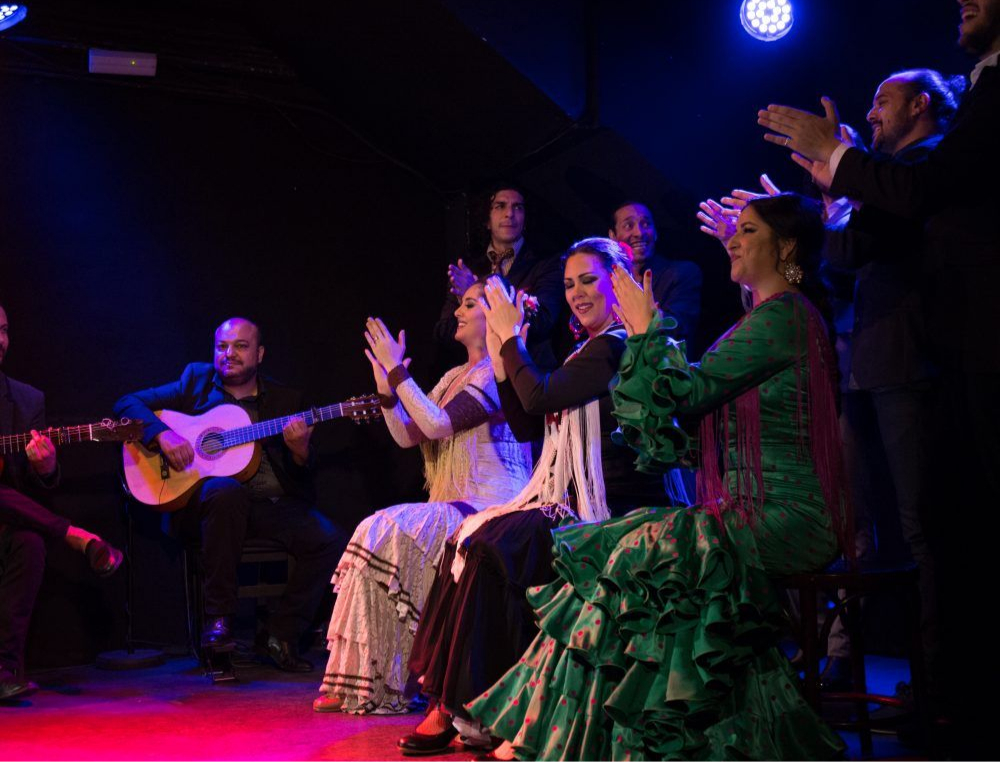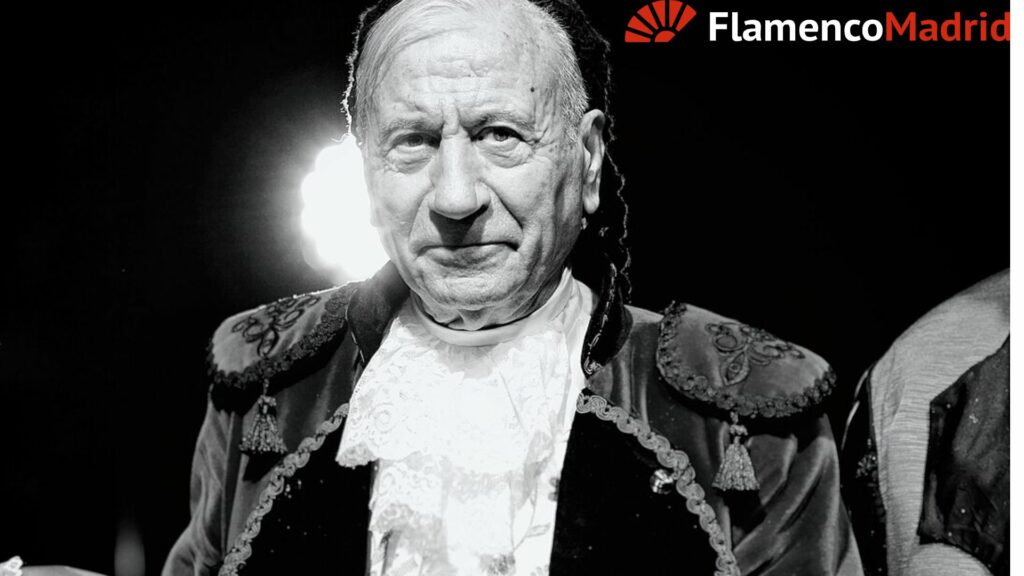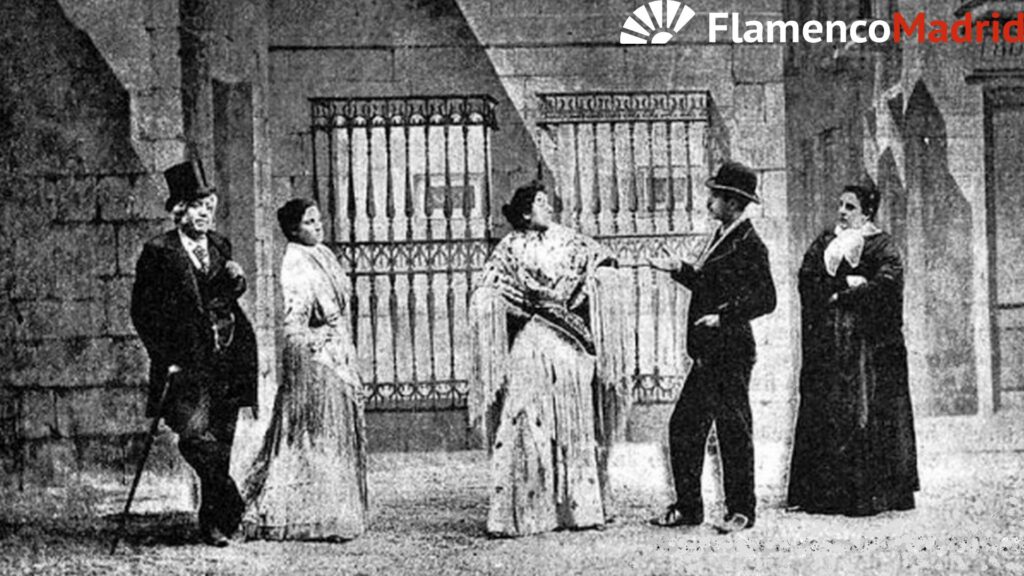

Curiosidades Flamencas
Zarzuela and Flamenco: The Secret Rivalry of Madrid’s Two Musical Traditions
If you stop and listen, beyond the murmur of the terraces and the distant barrel organ, Madrid has two soundtracks fighting for the soul of the city. On one side, the grandiose, orchestral, and traditional sound of Zarzuela that escapes from the century-old theatres of Calle Alcalá. On the other, the raw, intimate, and profound wail of Flamenco that seeps through the cracks of tablaos in neighborhoods like Las Letras or Lavapiés. At first glance, they seem like night and day, water and oil. One wears a bowtie and velvet armchair; the other, an open shirt and a rush chair. But if you look closely, you’ll see that these two giants have been eyeing each other for more than a century—copying, teasing, competing and, deep down, respecting each other in a silent embrace. This is the story of their strange and fascinating relationship.
When Flamenco Crashed the Zarzuela Party
Picture this: late 19th and early 20th century. Zarzuela is Madrid’s undisputed queen, the Netflix of the era, the mass spectacle everyone goes to see. Its composers and librettists—geniuses like Ruperto Chapí, Amadeo Vives or Federico Chueca—had an ear close to the street. They noticed that in the neighborhoods, in neighbor patios and noisy cafés, there was a visceral art that drew crowds: flamenco. And so they cleverly decided to invite it to the party.
Little by little, they began sprinkling their works with flamenco elements. Suddenly, dance numbers by tangos appeared, characters with swagger and a “aflamencado” attitude. Masterpieces like La verbena de la Paloma or La Revoltosa portray this popular Madrid where flair has a touch of jondo. In Agua, azucarillos y aguardiente, this popular atmosphere is explicitly shown, while in works like El huésped del sevillano, the Andalusian connection becomes a driving force of the plot. It was a winning formula: bringing the street and the people’s “truth” to the big stage.

And the Other Way Around? Flamenco Opera and Theatrical Flair
But flamenco didn’t just sit back. The relationship was reciprocal. As it left the intimacy of private gatherings to conquer the theatre, flamenco realized it needed more than just raw emotion and duende. It needed staging, structure, dramaturgy.
Sharing the bill with Zarzuela companies, flamenco artists learned to structure their shows. Thus was born the “Flamenco Opera,” a format which, beyond its fiscal origins, reflected reality: recitals were organized as emotional journeys with a beginning, development, and end. Costumes, lighting, and order of styles were all carefully designed. Lyrics of styles like Petenera or Malagueña turned into miniature dramatic narratives. Singers and dancers didn’t just perform—they acted. Flamenco discovered that, without losing its soul, it could borrow from theatre to become even more universal.
A Common Language: Verses, Wails, and Passion
In the end, though the attire may differ, the skin is the same. Zarzuela and Flamenco are two different vessels carrying the same raw material: human passions. They speak of what moves us all: love, sorrow, jealousy, joy.
It’s no coincidence that great poets like the Álvarez Quintero brothers wrote librettos for zarzuelas and, at the same time, flamenco lyrics. A tenor’s romance in Luisa Fernanda may speak of heartbreak just like a seguirilla. The chill from a line in Doña Francisquita echoes the shiver caused by a good soleá. These are two accents of one universal language: passion.
Flamenco Touches in Unforgettable Zarzuelas
To sharpen your ears, here are some famous zarzuelas where the connection to the popular and flamenco is most evident. They are the perfect proof of this secret romance:
-
La Revoltosa (Ruperto Chapí): The music not only tells a story of love and jealousy, but captures the sound and rhythm of a Madrid neighborhood patio, with almost flamenco-like energy.
-
La tabernera del puerto (Pablo Sorozábal): Its characters are seafaring folk, with passions running high. The habaneras and popular rhythms connect directly with the people.
-
El huésped del sevillano (Jacinto Guerrero): The title says it all. It’s an exaltation of Andalusian culture within a zarzuela framework, set in Toledo as a crossroads of cultures and passions.
-
Gigantes y cabezudos (Manuel Fernández Caballero): Although the Aragonese jota is the star, this is a tribute to regional identity and spirit—something it shares with flamenco.
-
La del manojo de rosas (Pablo Sorozábal): A modern Madrid sainete for its time, blending pasodoble with fashionable rhythms like the foxtrot, proving the zarzuela’s ability to absorb the street—just as flamenco did.

A century after these flirtations, each genre has found its place in Madrid. Zarzuela remains the city’s grand lyrical spectacle—a cultural jewel to enjoy in its magnificent theatres. Flamenco, meanwhile, is the intimate, visceral pulse of the city, reinvented each night in smaller, sacred spaces.
But this old secret rivalry—this sidelong glance—has made them both stronger, richer. To truly grasp the soul of Madrid, with its verbenas and the shadows of old courtyards, you have to try both. And while Zarzuela awaits you from a velvet seat, the raw essence of flamenco, which once inspired great masters and learned from theatre, still burns. It hides in those small temples where silence is sacred, only to be broken by a guitar, a stomp on wood, and a voice breaking with no script. There, art lives and dies each night—proof that the echo of this strange and fascinating relationship still resonates.

The best 6 Flamenco shows in Madrid
Meet with the majesty of flamenco and its contention in the tablaos of the capital of Spain.
See shows in Madrid